In this video, I learn the secret trick the pros use to read greens… AimPoint Putting! Huge thanks to Jamie Donaldson and Woburn for having us down. You can find even more info at:
https://aimpointgolf.com
https://makeeverything.aimpointgolf.com
https://www.instagram.com/aimpointgolfeurope/
And check out Jamie’s YouTube channel @JamieDonaldsongolf
For more info on the limited edition “Spring Bloom” shoes I’m wearing in this video, along with other apparel and equipment I use, check them out here: https://linktr.ee/finchgolfmedia
(👆 Includes a discount on some items!)
Now, if you watch professional golf, you may have noticed some of the top athletes in the game doing this. Now, it’s called aim point, and it’s actually quite controversial. Some players and some pundits have been calling for it to be banned. Now, I’m not quite so sure. I have used aimoint in the past and actually found it quite useful, but I am by no means an expert. So, what I’ve done is I’ve come down to the glorious WOBurn where I’m going to have a lesson today of one of the games leading instructors in Aimoint, Jamie Donsson. He’s going to take me through a lesson, give me the information that I need to hopefully improve my putting, and then I can pass that on to you guys as well. So stay tuned. This should be interesting, and it should answer some questions. If you’ve ever been confused about what the play is doing when they’re on the green doing this or doing this, hopefully this video will help you understand a little bit more about what aim point is. Right. So what I’m thinking, let’s just go through a lesson. So obviously I’ve got a little bit of experience with it. Yeah. And I’m using a bit of a kind of hack version of aim point during my rounds at the moment. So reading greens and then kind of just crouching down, not really getting the the break points or stuff like that. So kind of talk me through it as though it is a bit of a refresher, but like I’ I’ve never been here before. Well, I think the thing to do first of all is let’s have a look at you read a few putts and just see what we’re dealing with. So obviously you’ve got your performance in mind. So how do we make you a better putter? And one of the things you have to do to putt well is know where to aim. Okay. So having a good tangible solid read is really important. If you’ve got the best stroke in the world and you choose bad targets, you’re going to miss. Mhm. So I think getting green reads down, nailed down, no room for error is really important. Perfect. Cool. Okay. So one of the key things that we need to get good at is feeling slopes. And everyone can feel slopes. Like I’ve never met anyone that can’t feel slopes. However, if I was to try and feel the slope here, I wouldn’t feel much cuz there isn’t much there. Yeah. So, I’ve measured these and I want you just to stand at the one, the two, the three, the four. And as you move that way, you’ll notice that the slope increases to this to Well, you tell me which side. Yeah. It will be this side, but it’s to this side. So, this is a fairly flat area. Okay. The next one will be what we call average. Then we get into steep and then we get into severe. Okay. Okay. So, basically um there’s a range of slopes on golf courses and when it gets to a number eight, the ball rolls away, right? Seven in summer. Are these are these percentages? They are percentages. Right. Okay. And what you do is you, you know, at the beginning of an apoint class, we just introduced people to it. We give them some options for feeling slopes. And I would say the biggest thing you want to work on is if the ball breaks more than you estimated, it’s a bigger number. Okay. Go back, refill it after you’ve missed. Yeah. and say, “I wish I’d said three, not two,” for example. And the idea is every single part is a calibration working back to you by cause and effect. It it is it’s a strange one. I remember the very first time that we did this like all those years ago, 10 years. And the work that we did then I think we took maybe about half an hour to like actually calibrate. Do you think this is a two? Do you think it’s three? Whatever it’s going to be. Yeah. And I still use the same feeling from that day. Perfect. late to now and and that’s what we teach in the classes. You know, we spend a good half hour getting this this piece perfect. Um but remember when we miss, we know why. We can refill. It’s just feel. Aim points all feel. It’s all feel. We make a mistake, we just wish we’d made a better choice, and then we go and refill it and say, “Next time I feel that, I’m going to say X, not Y.” Yeah. Yeah. How do you feel? I feel great. Cool. So, let’s say I’ve read this put with a 2% slope from right to left. I will hold up two fingers with the index finger intersecting the middle of the hole. And there, the middle finger sits on the outside. I will then establish my aim point on the outside of my middle finger. And I will look to set the ball out on that aim line judging that the ball will curve around and hit the hole. Okay. So, if I give you a couple of putts, uh, now big question straight away is I can see there’s lines on the ball. Do you use a line or no line? I do. Yes. Okay. So, we’ll also check today the efficiency of that because that’s a big part of it as well. If you use a line on the ball, obviously that’s controlling your aim. Yeah. If you put that down in the wrong place, then you’re in trouble straight away. Okay. Let’s give you this. This is a 15 ft putt. Okay. And to this one, sorry. Yeah. So, a 15T putt. I’d like you to run through your process and I’m just going to watch what you do. So, at the moment, what I’m doing is I’m kind of straddling the line. Yeah. Kind of coming through. What I’m trying to do more and more of is get get a read here, like a general read, but I’m focusing a lot more on around the hole. Right. Well, that’s cuz my pace is I I don’t tend to like ram the pot. Like I tend to dial it in a lot. Right. Well, we’re going to we’re going to talk about that. Okay. because already there is a an issue there. Okay. And we’ll discuss it. But what number did you get? So that’s thing I’m not using. Oh, okay. So what what did you feel there? So all I did there, so I basically certainly around the hole, I’m thinking, okay, I felt it just kind of going to be moving a little bit to the right. Okay. So then kind of when I’m down behind the ball, I give it a quick check. Yeah. And then what I tend to do, so without um kind of using the full system, which we’ll get into a little bit, all I try and do is I try and pit my straight line. Yeah. I try and kind of see how much I think it’s going to break. Yeah. And then I’ll line up line up my ball to that point. There’s a lot of there’s a lot of Pete. There’s a lot of gray areas here. This is This is just how I live my life, Jim. Well, we need to get a bit more specific here, I think, and then line my ball up to about that point. I don’t really take any practice strokes. All I’m focused on is just getting my setup right. And then one last look at the hole ball and then I just tend to hole it or miss it. Or miss it. Well, I tell you what, th this was a classic misread, okay? Because you went too near the hole. Okay. Now the thing about this read is uh if you felt nothing here and nothing here by going nearer to the hole, okay, you’ve brought in a very short slope that doesn’t really affect break. Okay, so what we learned with aimoint is there there’s only one real area that we have to worry about. And one of the biggest myths we bust with aim point is what happens in the last last 30 is irrelevant, right? Unless the first two are completely flat. So, we never measure in the last third. And and if you do measure in the last third, this is potentially where we’re getting a little bit too close to the hole. And there’s a little bit of skepticism over aim point. We get a little bit of flack on social media. Uh people are talking about footprints near the hole. To be fair, for that read you had there, that’s as near as you should have got to the hole. Got you. Right. Okay. So, we’ll we’ll talk about traffic later. So, so you’re telling me if my putt’s this far away, I don’t need to No, I don’t I don’t need to read that. I wouldn’t bother. Yeah. I mean, I think I think that last third read is possibly where people see people too close to the hole. Now, I’m not telling you not to measure there because we don’t like the look of it. It’s it doesn’t make enough difference. Is it the case of So, with these first two/3s, certainly on that the last third, it’s going to be breaking towards the hole from that hole. Exactly. It’s already been affected through the middle third. the the ball’s been tilted here, but also like a one from here. If it is one at the end, it’s such a small break. It doesn’t really make sense. It doesn’t matter. Okay, that makes sense. Cool. Okay, so let’s let’s have another one. Let’s have this one to this white disc here, please. This one. So, generally speaking, so we’re going to do two/3. So, there there. Exactly. So, pretty flat around here. Okay. So, I’m getting like one. Cool. This way. Yeah. Maybe one and a half there. Two. So, so, so what we know is is that the the larger of the two is going to be the most effective number to use. Um, so, so now that we know it’s around one and a half, where would that have you aiming? Um, if I was to use No fingers, cuz you don’t use them yet, do you? So, what I do here is I would be looking at a point. So, kind of like got this little bit of grass here and then beyond. So all I try and do is I try and visualize a straight line from there to there. Yeah. And then I just try and imagine and see if it looks right that it would like break in along that point. Um which is something which the very first time we had a lesson I still I still use I mean I love visualizing curve and I think it’s really powerful for a lot of people. Um there is a little bit of maths we can put behind that so you can actually calculate where it will be so it’s less of a visual guess or an estimation. Mhm. Um, you know, we’ve got a saying, why guess when you can measure? Okay, that sounds technical, but it’s just fingers. So, this is why I like it, cuz that’s the most I can counter. Maybe throw in a thumb at the end. Okay. So, so let’s let’s just go with your original aim. Okay. With no fingers. Yeah. Yeah. Just just want to see the effectiveness of the system that you’re using right now. Okay. So, that’s a decent speed. You hit the putt nicely, but it’s definitely missed low. Yeah. Something to to notice there is for that to go in it probably have to have been five foot past. Yeah. To actually account for the brake. So yeah. So one thing we do see with aimoint when people learn it is their speed control changes because your instincts or your subconscious to make that putt you’d have had to smash it. Some people would have smashed it hit the hole in some format but if they miss it they got a five foot coming back the other way. So aim points also help people change their their speeds. Yeah. And it’s down to not having to adjust speeds to make putts. That makes sense. Yeah. Which makes perfect sense. Yeah. Yeah. Yeah. Okay. So So So let’s just look at that one. Okay. And what I want you to do is is is is just stand here and just play two fingers from the middle. Okay. There we go. And then tell me where that gives you as a rough aim. About just a touch less there. Yeah. There. There. So what’s interesting is that’s double. Yeah. The visual estimation. Yeah. Do you agree with that? Yeah. Yeah, I would say so. Okay. So, so, so now we can and this is why we use the fingers because people don’t see enough break. Mhm. Like using the fingers will give you a really nice understanding of how much there really is. Okay. Uh, and I would say that most people see about half of what’s really there. Okay, that makes sense. You know, I’d say all the classes I’ve done and the players I’ve worked with, they normally say, “Wow, that’s half of where I’d normally aim.” Okay. So, so now you might be able to see a little bit of a better curve to the hole, right? Yeah. Yeah, definitely. And more distinct as well. Good. So, let’s see what this plays out like. This is existed right. So, what I’d be basically doing here in my head. So, from my ball to the ball to the rhythole. Um, I draw a straight line from the ball to the hole, then a straight line from the ball to where the aim point is. Yeah. And then in that gap I can kind of like see the So So why don’t I put this down where you would see that. Love that. Do it. Do it. There we go. Just maybe half a foot too quick in ball speed. Great putt. But but look look at the difference to you. I mean and and now from a coaching standpoint all of a sudden it’s like the first part we could have said, “Oh, you started it left.” Mhm. But I don’t think you did. No. You know, I think if we can hit this disc with all our reads, we would be happy in the knowledge that our face control at impact is good enough. Yeah. And and so here’s something to think about. At one degree from a foot is kind of 2 in off straight. Mhm. And at 10 ft, it’s 4 in off straight. So you’re you’re missing quite quickly with just a degree out. Um if we can hit that disc regularly, then your face control is good enough. Yeah. We’ve hit two putts. Mhm. We’ve learned so much already. First one, you were bringing in slopes that didn’t matter. The second one, you you’d kind of lost using the fingers and they’re a big part of aim point because you you create angles with the fingers and the further away you are, the wider that angle goes. Yeah. And it matches the rate of break and and we kind of locked in there with physics. So, you know, we’ve been reading greens for for nearly 20 years. Uh we’ve just found a way of doing it fast, simple, and effective. Yeah, cuz that’s one of the things in the news at the moment about speed. Yeah. And about actually pace. Exactly. Now, it’s I was kind of saying to these these guys before, I’ve never I’ve never particularly understood that as a criticism. No. Cuz if you use if you use aim point or you use a standard type of green reading, whether that’s just crouching down, if you use one or the other, it’s going to take pretty much exactly the same kind of time. It actually takes longer if you go behind the hole. Yeah. If you actually Yeah. Yeah. Um when we we videoed all the or timed all the players at Bay Hill and the aim points were way quicker. Yeah. Um yeah. So the criticism on speed I don’t get either and and I mean there’s three main criticisms, right? That takes too long. Yeah. Uh there’s too many footprints. We’ll address that later. And then the the craziest one is statistically no one’s got any better using Aimoint. Well, we we took everyone that’s learned aim point on PGA Tour, ran their numbers for seasons, and they’re all a shot better per tournament after using it, and then we’ve got players like Moricawa coming out, he’s fourth in the world saying, “Aimoint is a thousand% made me a better putter.” And for him, that’s big as well. Yeah. Like cuz that that was always his well, not always his weakness, but Well, he’s a hell of a ball strike. Elite ball striker. Yeah. Creates so many chances. Okay, so let’s get into this read again. And and what I’m thinking, Pete, is we really need to introduce using fingers. So there he’s gone too close again. Creature of habit. So we can measure it here. Yeah. And here. And that’s enough cuz between here and here, the slope isn’t going to have changed. The ball’s already curving at this stage. It’s already breaking and it’s too short a distance to worry about it being an issue. Okay. Okay. What we got there? Uh so certainly on the second one, it’s a two. Okay. play two fingers for me again and uh just come a little closer to your ball. This is like as far as like where I’m standing is it just like I’d be around around about here is good just like Yeah. And it’s it it definitely changes with the individual and that’s something when when you learn it in depth uh like let’s say with an aoint instructor they would make sure that all the calibrations and these pieces are perfect. So so the priority list with you is moving towards tidy process up. Yeah. And speed control. Mhm. Um, let’s do a couple more putts and see what we can find on the screen. Okay, [Music] let’s get into speed, okay? Because you’re not struggling with speed on short putts, but we definitely were on those kind of 10 to 20footers. So, maybe I could set up a couple of drills and get you thinking differently about speed. I would absolutely love that. That’d be wonderful. Cool. Okay, good. So, that’s about a 10 foot putt. Very nice. And I’m going to put that back on the spot there and watch another one. 10 foot as well. Yeah. Okay. So, the face of your putter gets back to about there. Okay. Which means that you’re using a back swing length of that far. Mhm. All right. So if that’s quite comfortable for 10T and the forward time would be matching cuz they were good putts. What do you think you’ve got to do to get to the 20T? I mean logic would say you swing it back a bit fur further. A bit further. Yeah, let’s let’s add 50%. Okay, which is about there. Okay. Okay. So what I want you to do is have a rehearsal now for the just away from the ball. Go 10 foot only. That’s it. Just figure out what that sort of forward speed feels like for 10 foot. So there’s your feel. Yeah, that’s the feels like. And now I’d like you to swing it to the second TEG. And I want you to add that same forward time. Yeah. Okay. So let’s play to 20 ft from there. Okay. Very nice. Fractionally short of our teg. Okay. So did it feel uncomfortably long to you? a little bit but the actual stroke length generally I don’t work on it okay too much at all but well we must start okay so now go 10 foot okay go to 20 go to 30 nice okay so now we’re going to we’re going to repeat that with putts 10 20 30 good so the combination of stroke length and tempo was decent for a 10ft putt up. Yeah. And now let’s lengthen that to the second TE. But the key for me is the rehearsals. Okay. What am I what’s my swing length and what’s my tempo feel like? I want to get you away from just hitting putts with inverted commas feel to actually training touch or feel. So we’ve got to consider what does it feel like? Does it feel good? If we’re happy we can hit the putt. Okay. Yeah, it’s a it’s definitely an old one. Good. And I feel like we’re just fractionally short of that, too. Sure. Yeah. So, there’s a a note to self or a note to Pete is get a bit braver with those swing lengths. Okay. It’s not going to go miles by cuz you can control the forward time. Yeah. Yeah. Yeah. So, what we’re going to do is I’m going to give you I’m going to put a load of discs down all a foot apart. And what we’re going to say is you’ve got to make the first putt. Yeah. Make the second, make the third. You got to make them all the way to the end. So, tough drill. This is a ladder drill with a bit of jeopardy, right? Cuz if you miss one, you come back to the start. Good. Here we are, Pete. We We’ve managed to get rid of four in a row. So, what would this percentage wise be? You would be gaining a huge amount on strokes gained right now. It’s kind of incalculable. Yeah. Well, we’re 11 level 28. Well, I mean, if if if this was your first four putts in a tournament, you’ve gained 62 on the first putt at least. pressure building here because you’ve got a chance to to keep beating that record, haven’t we? There’s no pressure here, Jamie, cuz it’s all part of the process. Pressure makes diamonds, right? Yeah. Doesn’t matter. You just hit a port. If it goes in, it goes in. If it doesn’t, it doesn’t. Long as you put your best effort into it, that’s all that counts. Exactly. Son of a gun. I’m lucky. Pace wise is good. Yeah. Well, that’s Remember, realistically, this is mostly a speed drill. Yeah. So, your speed’s been fantastic on all these putts. Yeah, I’ll say that. No, it’s good. Like, as far as a drill as well, I said it will keep it’ll keep you going. Yeah. You got you’ve got to be inventive with your practice. If you just drop three balls and putt to a hole, you’re not going to get better. Yeah. You pull one, you push one, you make one. It’s it just you’re just practicing manipulations. So for me it’s just trying to be a bit more inventive with the drills like focus on speed on some start on another read on other read drills and then bring them back together. Yeah. Yeah. Um you know sort of separate the skill practice them individually then bring them back together and try them. That makes sense. Perfect. So that was fun. Lovely to catch up again and to run through that. And I really hope that there’s some pieces there that you can take into your own game and I think get better. For me, that’s obviously I know a little bit more, but I think for a lot of people, that’s a really good like starting point as well and a way to understand it. Exactly. More and and a lot of people who maybe read things that say aimoint’s slow or all these issues, try it out. Yeah. Because I’ve never coached anyone that thinks it’s slow. It’s only the people that don’t realize. And if you want to learn a point, we’ve got apointolf.com where all our certified instructors are listed. Uh, and we also do a suite of videos for people that cannot get to an instructor, which is makeverthing.golf.com. It’s best to learn in person, but we do have the digital for the people that cannot get to see someone. It’s always I think when whenever we’ve done like videos, certainly uh swing quest and like coaching videos in the past, like the amount of people who can learn from video, but then actually go see a coach to get more that individual advice is is absolutely bangal. Um, okay, cool, Jeremy. Thanks so much, Pete. Thank you very That was um really really good. It’s nice refresher and I feel I’ve learned a few more things there. Do you feel more confident? I’ve got to be honest. Yeah. There we go. Like even just from the little bits like the kind of the the way reing it to get that in the intermediate target to kind of like go over. Yeah. Instantly like visualization wise was just great there. So perfect. And I’d say with you is I’m sensing a tinkerer. So let’s try and create a something to stick to. This is the year of me not tinkering. I’m tinkerree. Okay. Well, that’s your routine and your green reading and some practice ideas. Uh, non-negotiables. Non-negotiables. Wow. It’s nice to leave her as a level 12. See you next time.

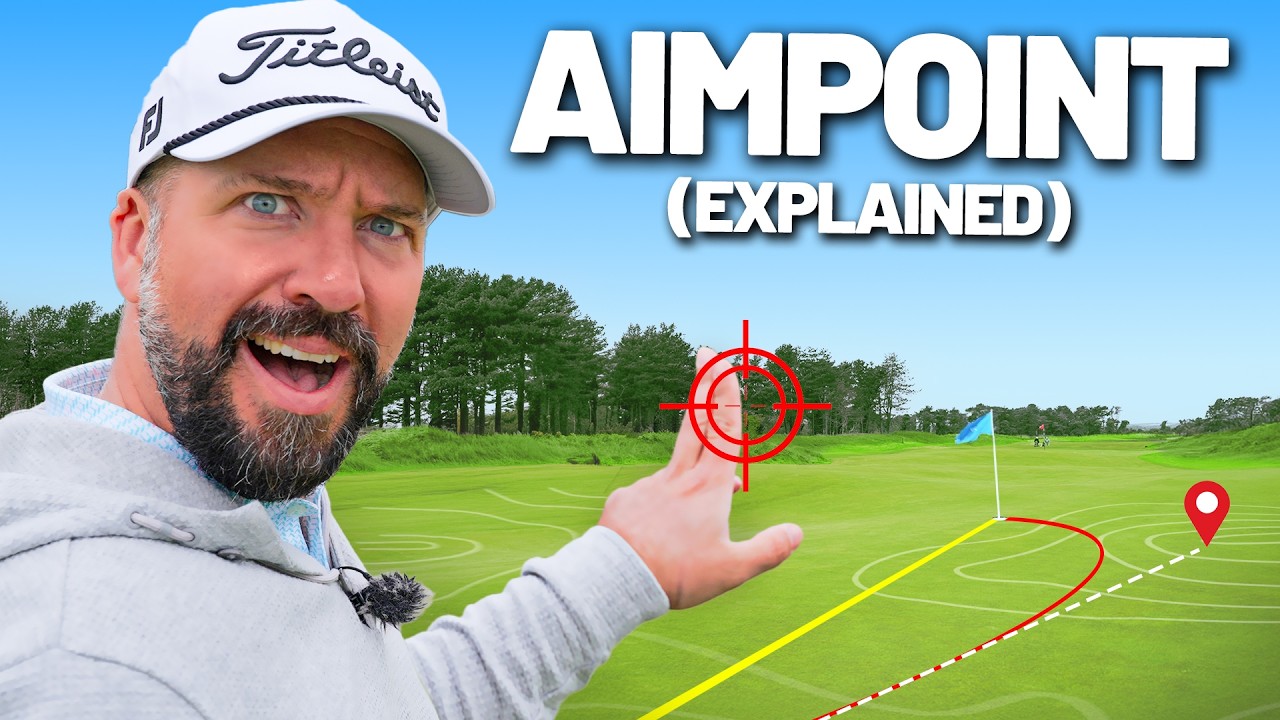
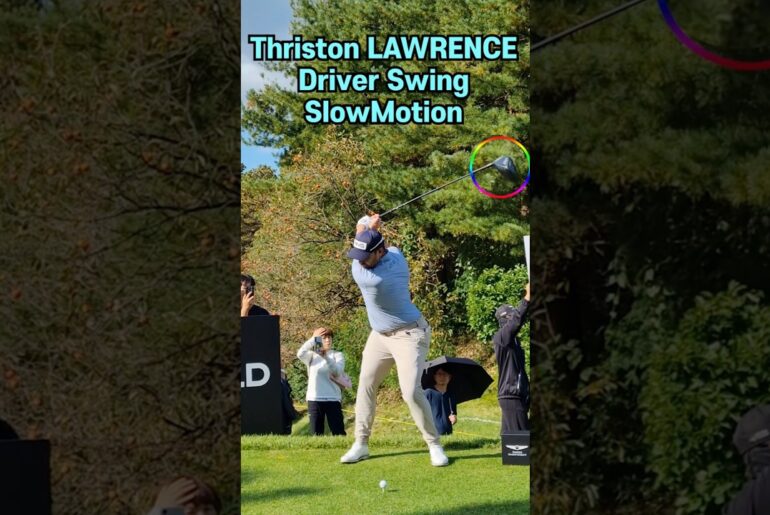
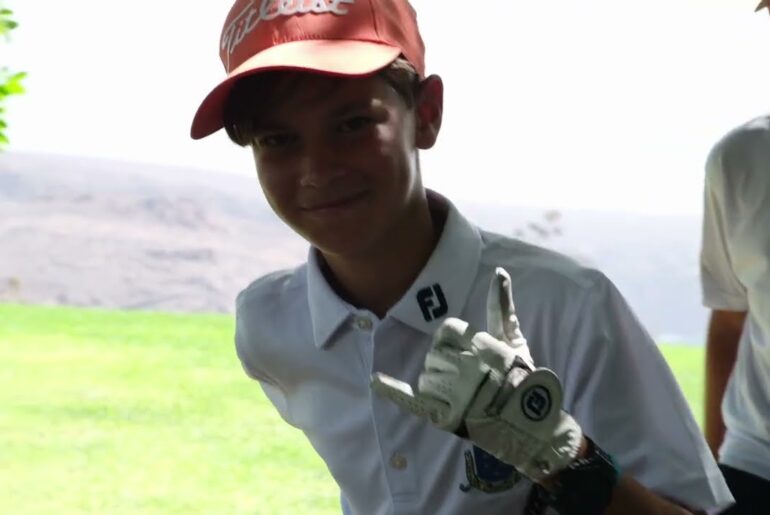

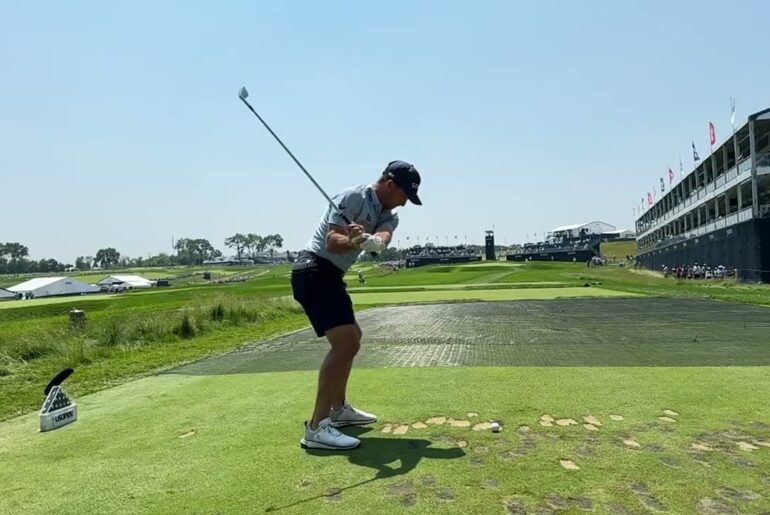

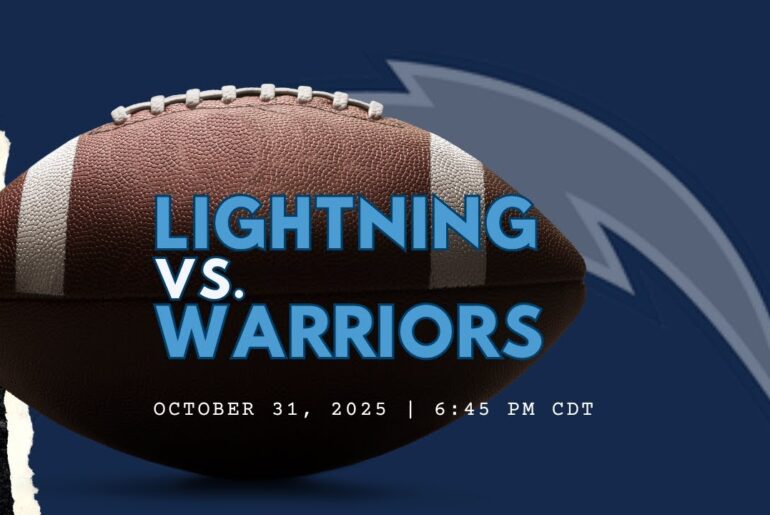
38 Comments
That was a fantastic lesson. And I will be in the websites that Coach Donaldson mentioned!
That was a great lesson! It cleared up several questions I had about Aim Point. Thanks Pete
I had a lesson just like this with John Howells at JCB and it’s helped my putting no end! I use the 10,20,30 foot putt drill at every course before the round to get a feel for the speed of the greens and how far to bring my putter back 👌🏼
I'm not sure I agree. If you're not measuring 4ft and out from a hole on an 18ft putt, how do you know what it will do? Is the principle to smash it through the break? What if it's a 2 at 8 ft and 4 at 4ft? If smashing through break isnt an option and it's downhill, you're going to miss low all of the time still. I can't help but think it's a gimmick. 99% of low misses I see, is just a golfer not committing to the putt.
More questions then answers in that video I’m afraid Pete, but I’d definitely like to hear more about that technique
Meaning no offence to anyone Aim pointers are like vegans if you don't agree with them they will spend all day trying to convince you that your wrong….
Ok…mind blown right away by the discussion that the closest area around the hole is irrelevant…
Great vid Pete…appreciate it…I think the arguments about banning AimPoint are stupid….if you watch someone who uses AimPoint and they are slow, they are not using it correctly…they do the AimPoint process and then add their traditional process because it gives them comfort and security…that’s what makes it slow…
I’ve been golfing for 28 years. I look at the putt from behind my ball. It takes me 5 seconds. I don’t slow the game down. I’ve played with countless aim point users; I am far better than any of them. Aimpoint is snake oil dressing up as science.
I'm not watching this until you get rid of that clickbait thumbnail.
So if most people see half of what’s actually there. Why not just skip the aim point dance and just double the read?
Did he say the last few feet of break of a putt is irrelevant..??
How many times I’ve seen a Pro use Aimpoint then horribly miss a putt?
No thanks
Aimpoint slows down play.
Excellent video, but I kept expecting to see Dan Grieve over in the corner chipping golf balls.
Where do choose to stand for putting your fingers up? Did i miss where that mentioned in the video? It seems like that would be one of the most important aspects of aimpoint. Okay, i did miss it lol. 14:40
What does Jamie mean by, “controlling the forward time.”
I would love to use Aimpoint but after having two inner ear surgeries ( 1 on each ear) my balance is totally skewed, One day I'm leaning left, another day I'm leaning forward and so on. Each day I'm having to concentrate on not stumbling over myself so you could imagine how difficult it would be as far as consistency to get a good slope reading. Is it possible to use just your eyes and then use the lineup method with the fingers just as effectively?? If so it's something I may dedicate some time too.
Aim point the worst thing to ever happen to golf…. Watching the womens NCAA tournament and them doing it from 2 feet omg… No wonder ehy it takes 5-6 hrs to play a rd of golf
So the amount of fingers we use depends on the severity of slope ? 1 finger for minor and 4 fingers for severe ?
Edit title – “How to make a long round even longer while improving nothing in your game”.
This is what we get with no club reviews. 😢
I mean, if it works for some pros, then so be it. But for your average joe, it seems kinda pointless. I can understand using it to dial in pace, but pace can be dictated by varying different factors. i dont find any problem in simply just looking for the apex of the slope and putting towards the break in that slope.
Unfortunately I can't feel the slope through my feet. for shorter putts say 6 feet in, I have my putter calibrated for plumb bob so the shaft is vertical. I straddle the ball and hang the putter between my feet with the shaft centred on my body; the putter will hang to one side and the degree of hang will indicate the amount of slope; I move forward toward the hole to take a second read; particularly useful with the optical illusion when you can't tell which way it is going to fall. You can practice putting and make adjustments on the result, up hill, down hill or side slopes. For the general reading I found the Expert Green operating system the absolute best and fastest – see mr one putt.
EGOS is better and faster than aim point
I love how he skews the percentage number in his favour by saying “the pros are A shot better per tournament” which means the best players in the world are gaining .25 putts per round average joe takes 10 minutes longer and doesn’t improve lololol
Don't encourage this voodoo Pete. Should be stamped out, pun intended 😉
Interesting vid Peter.
love the channel Peter and I am m stoked you are playing some really great golf lately. I do hope the quest for the open goes your way this year .
how can the last third of any putt be irrelevant?? what if it breaks the opposite way after the first two thirds, completely straitens out or the the slope gets steeper at the end . how can that not affect it
Lotta shite…..the Golden Bear be like "gimme that putter, one look then BOOM"
This will add more time on to playing holes,and is it really for amateur golf
saying the last third doesnt reallly matter just screams red flags
I have no comment …
There should be a 30 second limit to line up and stroke putt….
What a great video and this has explained how to do it more effectively and efficiently. With some great exercises to takeaway.👍
As with some medications, it's just a placebo effect.
If you really want to annoy your playing partners, use Aimpoint on 1 foot putts 🙂. Very good informational video, its something I've tried to include in my game and it definitely improved my putting as I struggled to see the break on flatter greens, feeling through the feet is definitely helpful for me! Its definitely not a "secret trick" though Pete 🙂
I've learnt aimpoint at Woburn with Jamie and it's a lot easier than it sounds – and definitely works. It's improved my putting no end and it's now part of my putting routine. Jamie runs sessions that last a couple of hours and at the end of it you wonder why all the commentators rubbish it – and realise why so many of the pros use it!